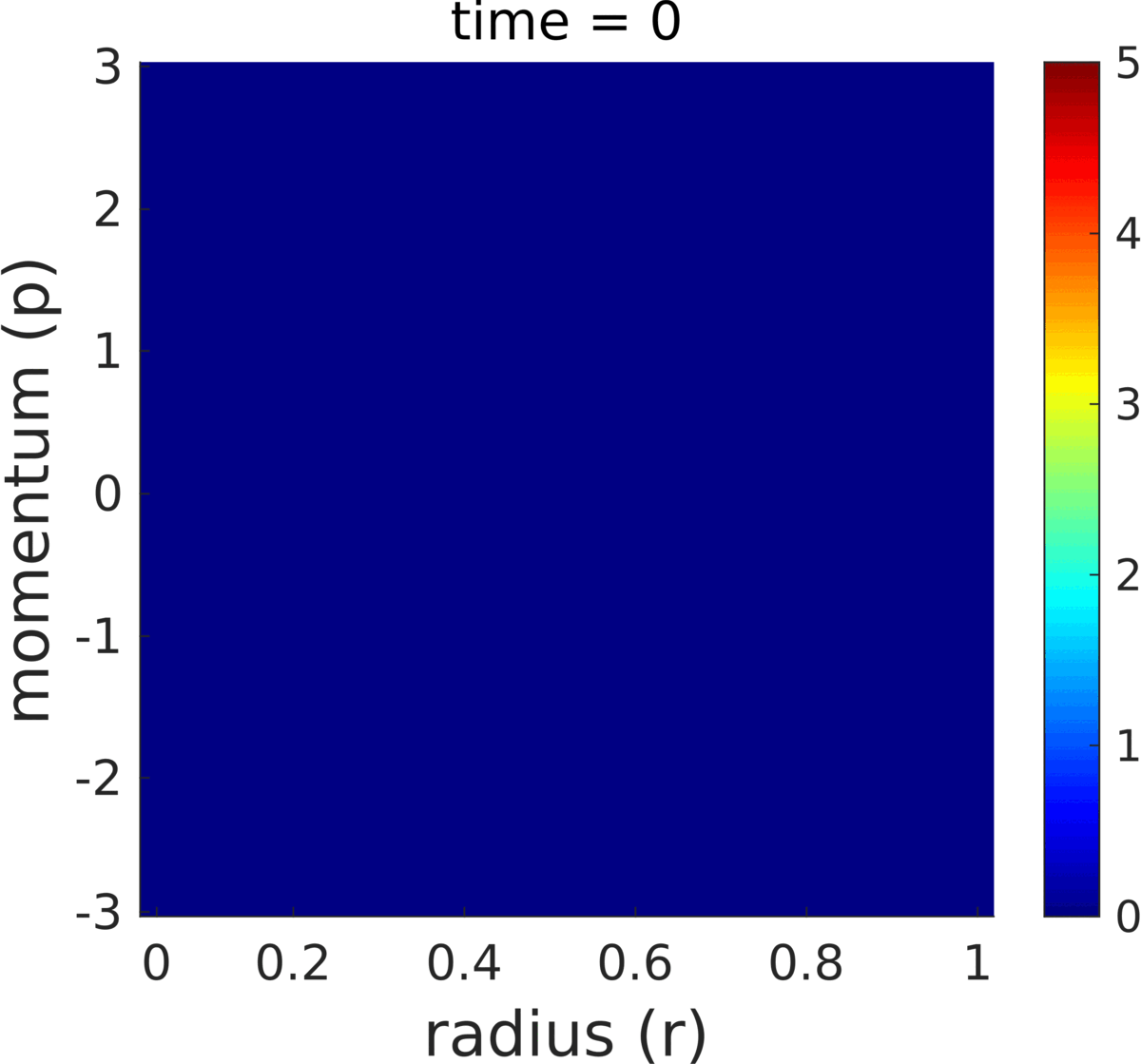Testing the Relativistic-Microwave Theory of Ball Lightning with Plasma Simulations
Amanda Elliott, undergraduate (BS) student in Physics, Florida Tech

Ball lightning is an unexplained phenomenon reported by thousands of eyewitnesses as a fireball moving unpredictably and independently of the wind, observed sometimes during lightning storms. Here a potential theory for the creation of ball lightning is explored. At the tip of a lightning stroke reaching the ground, a relativistic electron bunch can be produced. When impacting the ground, the bunch generates intense coherent transition radiation (CTR) in the form of a microwave pulse. This radiation ionizes the surrounding air, and radiation pressure evacuates the resulting plasma to form a plasma shell that contains a standing microwave. This theory is tested using an open-source plasma simulation Particle-in-Cell (PIC) code called Smilei. For the first simulation, a relativistic electron bunch with an energy of 50 MeV was accelerated toward a conductor, modeled as an overdense plasma. The resulting CTR was successfully simulated to have a magnitude of 317 MV/m. The goal for the second simulation is to model the standing wave trapping in a spherical plasma "bubble". For this simulation, the plasma shell forms but expands outward without stabilizing. The original results that were partially replicated here were generated by the author's personal PIC code, and they may not be reproducible using standard PIC codes designed for vacuum. Atmospheric molecule collisions with electrons cannot be simulated at this time scale, but the resulting energy loss can be approximated and may stabilize the plasma shell. Once a successful theory and corresponding simulation of BL creation are achieved, this will inform how to generate BL in a laboratory or during thunderstorms. The results of this research will advance lightning protection and aviation safety and broaden our knowledge of plasma physics and confinement methods.
References
- Poster presented at Florida Undergraduate Research Conference (FURC 2023), St. Thomas University, Miami FL, US (February 17-18, 2023) [PDF file, 3.82Mb]
- Poster presented at Northrop Grumman Student Design Showcase 2023, Florida Tech, Melbourne FL, US (April 21, 2023) [PDF file, 1.65Mb]
- Presentation at Northrop Grumman Student Design Showcase 2023, Florida Tech, Melbourne FL, US (April 21, 2023) [PDF file, 12Mb]
Numerical Models for Inertial-Electrostatic Confinement Fusion
Nico Braukman, undergraduate (BS) student in Physics, Florida Tech


An inertial electrostatic confinement (IEC) fusion device traps plasma particles with a spherically symmetric electrostatic field that accelerates ions toward the device's center, where they can collide and potentially fuse. The IEC fusion device is simpler and less expensive to construct when compared to magnetic confinement devices, like the tokamak: its employment will benefit fusion research. Here, the plasma motion in an IEC device is numerically simulated by solving the Vlasov-Poisson system of partial differential equations in spherical coordinates with one dimension of space and one dimension of momentum. The stability and accuracy of solutions obtained by various numerical methods, including the finite element method and the finite volume method, are compared.
References
- Poster presented at Florida Undergraduate Research Conference (FURC 2023), St. Thomas University, Miami FL, US (February 17-18, 2023) [PDF file, 447Kb]
- Poster presented at Northrop Grumman Student Design Showcase 2023, Florida Tech, Melbourne FL, US (April 21, 2023) [PDF file, 1021.3Kb]
Advancing Scan-specific Parameter-free Artifact Reduction in K-space (SPARK) with Gradient-based Optimization
Junfu Cheng, undergraduate (BS) student in Electrical Engineering, Florida Tech

Partially Parallel Acquisition (PPA) uses spatial information contained in the component coils of an array to replace spatial encoding, typically performed using gradients, thereby reducing imaging time. Parallel imaging reconstruction for accelerated acquisitions of magnetic resonance imaging (MRI) is generally posed as an optimization problem. SPARK is a convolutional neural network (CNN) that works with physical-based reconstruction methods to reduce artifacts in accelerated MRI. The CNN predicts a K-space correction term for each reconstructed coil. We apply different gradient-based optimization schemes in the neural network single channel training to minimize the mean square error (MSE) as a loss function value: e.g., steepest descent, conjugate gradient, and adaptive moment (ADAM) optimization algorithms supplied with various methods for the optimal step size search (e.g., diminishing, bisection, and golden section methods). We aim at the optimal combination of strategies to minimize lapsed computational time to train all 31 channels of neural network connections between inputs and outputs.
References
- Poster presented at Florida Undergraduate Research Conference (FURC 2023), St. Thomas University, Miami FL, US (February 17-18, 2023) [PDF file, 1.43Mb]
Undergraduate Research Minisymposium
Dept. of Mathematical Sciences, Florida Institute of Technology
Full presentation (Graduate Seminar, February 10, 2023) is available here [PDF file, 41.8Mb & MP4 file, 256.2Mb].
